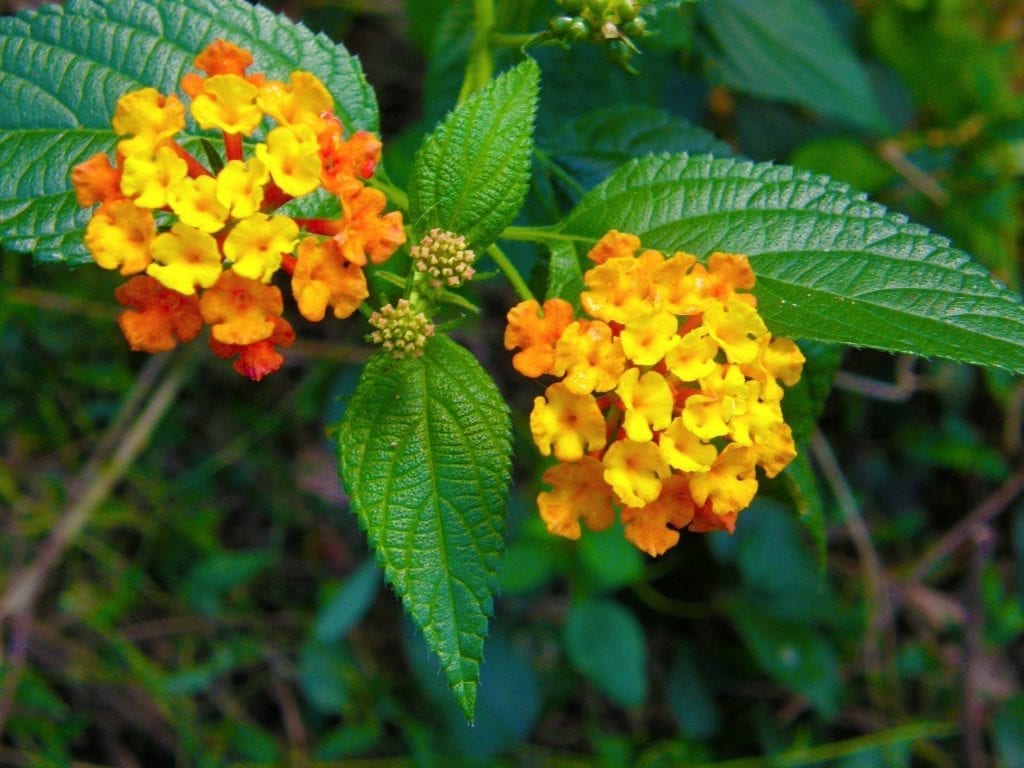National Parks
Lantana
Lantana camara has been designated a Weed of National Significance by the Federal Government.
It is one of the worst weeds in Australia due to its invasiveness, potential for spread, and economic and environmental impacts. It smothers and kills native vegetation, impacting habitat and food sources for native animals, and contributes to fuel load, creating hotter bushfires. It also reduces the productivity of pastures and plantations and is toxic to livestock.
Lantana is native to tropical and sub-tropical areas in Mexico, Central America, the Caribbean and South America, and flourishes in similar environments around the world.
First brought to Australia in the 1840’s as an ornamental garden plant, it has spread throughout the tropical and sub-tropical areas of the east coast, from Cairns to south coast NSW. With the right conditions it will also grow in warmer temperate regions and has been found in smaller infestations in central west Qld, northern parts of NT, WA, in southern and eastern SA, Vic, Lord Howe island and Norfolk Island.
Typically, lantana is found growing in disturbed areas such as roadways, cultivated areas, fence lines and along waterways, forest margins, and the understory of open woodlands. Lantana is not very shade tolerant, so does not thrive in a rainforest environment with a heavy canopy. However, it will quickly spread should the canopy open-up.
There are two main forms of lantana. The ornamental form used in landscaping is much smaller and produces less seeds. However, it should not be grown as it has the potential to cross-pollinate with wild forms, creating new varieties that could spread in the wild.
The weedy variety found in bushland grows to 2-4m, with multiple prickly woody stems, and oval shaped leaves. The leaves are rough and have a pungent smell when crushed.
Flowers grow in clusters of 20-40 individual tubular flowers. They range in colour from white, yellow, orange, red, pink and can also be multicoloured. They can flower all year but are most prolific during spring and summer.
Fruit are small and berry-like. They are green when immature and ripen to a purple-black colour. Each berry contains a single seed, which can remain viable for several years. The seeds are spread by birds and mammals that eat the fruit.
Lantana has a short taproot and many shallow side-roots. Horizontal stems can also take root in contact with soil, creating dense impenetrable thickets that smother native bushland and pastures. Dumped garden waste, or movement by machinery will spread Lantana, as fragments of rootstock can also sprout, generating new plants.
Methods to control Lantana depend on the severity and location of the infestation. An integrated approach, combining a variety of methods and long-term follow-up is the key to keeping it under control. Control methods include mechanical removal, use of herbicides, regular burning, biological control and revegetation of the affected area.
In 1995, the National Parks Association was given the John Herbert Award by the National Trust for Excellence in Heritage Conservation Works or Action.
This award was for the Boombana Lantana Project which is an ongoing project in the Boombana section of D’Aguilar National Park. The objective of this community-based work is to remove a prolific growth of lantana and other weeds from previously logged parts of the former forest and to assist in regeneration of native vegetation to a near natural condition.
Since 1986 the Vegetation Management Group, an ongoing Lantana management project, has operated in the Boombana and Jolly’s Lookout sections of D’Aguilar National Park. Each month, a dedicated group NPAQ members and volunteers work together to remove Lantana and other weeds from historically logged parts of the park, and to assist in regeneration of native vegetation.
If you would like to be part of this ongoing NPAQ project to control Lantana in D’Aguilar National Park, please keep an eye on the Activities & Events page on the NPAQ website www.npaq.org.au/events. The clearing days are held on the 3rd or 4th Saturday of each month.
References
https://www.environment.gov.au/biodiversity/invasive/weeds/publications/guidelines/wons/pubs/l-camara.pdf
https://weeds.brisbane.qld.gov.au/weeds/lantana
https://www.daf.qld.gov.au/__data/assets/pdf_file/0009/62010/IPA-Lantana-PP34.pdf
http://weeds.ala.org.au/WoNS/lantana/
Key Threatening Process Nomination Form – For adding a threatening process under the Environment Protection and Biodiversity Conservation Act 1999 (EPBC Act) https://www.environment.gov.au/system/files/pages/87ef6ac7-da62-4a45-90ec-0d473863f3e6/files/nomination-lantana-camara-invasion.pdf

